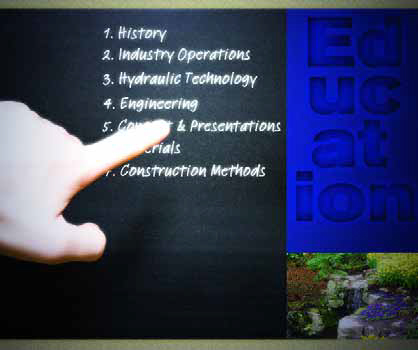engineering
In December 2004, WaterShapes introduced ‘The Platinum Standard,’ a registry of projects that embodies watershaping…
In December 2004, WaterShapes introduced ‘The Platinum Standard,’ a registry of projects that embodies watershaping…
In December 2004, WaterShapes introduced ‘The Platinum Standard,’ a registry of projects that embodies watershaping…
In December 2004, WaterShapes introduced ‘The Platinum Standard,’ a registry of projects that embodies watershaping…
Every once in a while, a project comes along that gives you a chance to step up and demonstrate your company’s capabilities. The construction of the swimming pool seen here was just that kind of exercise for our firm. Located in Potomac, Md., the property is just west of Washington, D.C., in an exclusive neighborhood remarkable for the outstanding caliber and quantity of its watershaping and landscaping projects. We became involved here through a custom homebuilder who was remodeling the property and wanted to do something special in the backyard. This represents a perfect example of how our firm, Alpine Pool & Design of Annandale, Va., thrives in this market. Through the years, we had already worked not only with the homebuilder, but also with the architect as well as the landscape architect. When it came time to consider watershape construction, all three recommended us for the job – testimony to the fact that ever since we opened shop in 1986, we’ve done all we can to establish a reputation for high-value collaboration as part of a community of like-minded designers and contractors. We pride ourselves on being able to execute the most challenging designs and
It’s an unfortunate fact that landscape architects receive little or no formal education in watershaping while they’re in school. As a result, where the typical landscape architect’s irrigation plan will show every pipe, fitting, wire and component for a given project, that same project’s pool plan will carry almost no detail at all. This phenomenon begs the question: Why don’t our colleges and universities do more to educate landscape architects about watershaping? The answer to this question causes me double pain, because I know full well that
As we discussed last month, perimeter-overflow details are among the most distinctive and challenging of all features in today’s custom pool market. In March’s column, we defined the different types of these edge designs, then described the complex, exacting process of building a knife-edge overflow system. This time, we’ll get into the hydraulic finesse needed to make these systems work. This includes everything from calculating bather surges to sizing the plumbing and surge tanks needed to make these effects function
If you’ll recall, I used this space last month to say farewell to David Tisherman’s “Details” column. His departure left us with a significant role to fill – especially given how provocative his column had been through the years. As often happens when a key person departs an organization, we weighed the available options and, not to flatter David overmuch, decided that replacing a voice so singular would best be accomplished by
Those of us in the design and construction industry are engaged in a singularly complicated human endeavor. To make things work, it’s common for many technical disciplines to come together, including soils and structural engineers and contractors and subcontractors as well as architects, interior designers, landscape architects, lighting designers and watershapers – all working in concert to bring form to the goals and aspirations of the clients. These professionals unite in designing spaces that people use and occupy – a simple yet profound thread that ties all of us engaged in any given project together. Through our combined efforts, we



















